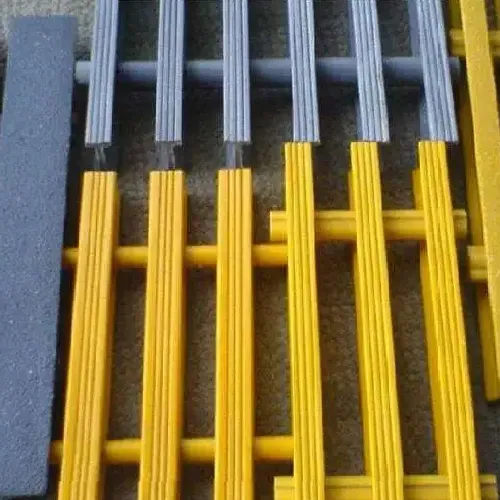loading...
- No. 9, Xingyuan South Street, Dongwaihuan Road, Zaoqiang County, Hengshui, Hebei, China
- admin@zjcomposites.com
- +86 15097380338
- Welcome to visit our website!
Exploring the Advantages and Applications of Fiber Reinforced Polymer Steel Bars in Construction Industry
Understanding FRP Steel Bars A Modern Solution for Reinforcement
Fiber Reinforced Polymer (FRP) steel bars are emerging as a revolutionary alternative to traditional steel reinforcement bars in construction. As the demands for sustainability and durability in structural engineering grow, FRP materials offer a multitude of benefits that can significantly enhance the performance and longevity of concrete structures.
What are FRP Bars?
FRP bars are made from a polymer resin reinforced with fibers, typically glass, aramid, or carbon. This combination results in a lightweight, high-strength material that exhibits remarkable resistance to corrosion and environmental degradation. Unlike traditional steel bars, which are susceptible to rust and chemical attacks, FRP bars maintain their integrity over time, especially in harsh conditions such as marine environments or areas exposed to de-icing salts.
Advantages of Using FRP Steel Bars
1. Corrosion Resistance One of the most significant advantages of FRP bars is their resistance to corrosion. Traditional steel reinforcement tends to rust, leading to structural weaknesses and costly maintenance. In contrast, FRP bars do not corrode, reducing the lifecycle costs of structures.
2. Lightweight FRP bars are considerably lighter than steel, making them easier to handle and transport. This property can lead to reduced labor costs and make installation faster and more efficient, ultimately saving time on construction projects.
3. High Strength-to-Weight Ratio Despite being lightweight, FRP bars possess exceptional tensile strength. This means that less material is required without compromising structural integrity, which is particularly beneficial in applications where weight is a critical consideration, such as bridges and high-rise buildings.
frp steel bar

4. Non-Magnetic and Non-Electric FRP materials are non-magnetic and do not conduct electricity. This feature makes them ideal for use in sensitive environments, such as power plants or medical facilities, where electromagnetic interference or electrical conductivity needs to be minimized.
5. Durability FRP bars are resistant to many of the environmental factors that cause traditional materials to fail. They can withstand extreme temperatures and are impervious to chemicals, making them suitable for various applications, from coastal buildings to industrial structures.
Applications of FRP Steel Bars
The unique properties of FRP bars make them suitable for a wide range of applications. They are commonly used in
- Bridges With their high strength and lightweight nature, FRP bars can be utilized in bridge decks and structural components, improving performance while minimizing overall weight. - Parking Structures The resistance to corrosion and chemicals makes FRP bars an excellent choice for parking garages, where exposure to de-icing salts and vehicle fluids is common. - Marine Structures In environments where concrete structures face the threat of saltwater corrosion, such as piers and docks, FRP bars provide a durable and long-lasting reinforcement solution.
- Retrofitting FRP materials are increasingly employed in the retrofitting of existing structures, enhancing their load-carrying capacity without the need for extensive modifications.
Conclusion
As the construction industry continues to evolve, the demand for innovative materials such as FRP steel bars is becoming more pronounced. Their unparalleled advantages, including corrosion resistance, lightweight, and high durability, provide a compelling case for their use in modern construction. By embracing these advanced materials, engineers can ensure the longevity and safety of structures while also contributing to more sustainable building practices. As technology advances and production methods improve, it is likely that FRP bars will play an increasingly pivotal role in the future of structural reinforcement.
-
Premium FRP Handrail for All ApplicationsNewsAug.29,2025
-
Low Maintenance FRP Mini Mesh Grating ProductsNewsAug.29,2025
-
Innovative FRP Square Tubes for Modern Industrial SolutionsNewsAug.29,2025
-
FRP Water Storage Tanks Wholesale Solutions for Bulk BuyersNewsAug.29,2025
-
FRP Molded Grating Solutions for Diverse Industrial ApplicationsNewsAug.29,2025
-
Construction Advancements Through FRP Pultruded ProfilesNewsAug.29,2025
-
Why Choose FRP Railings, Guardrails, and Handrail Systems?NewsAug.29,2025
